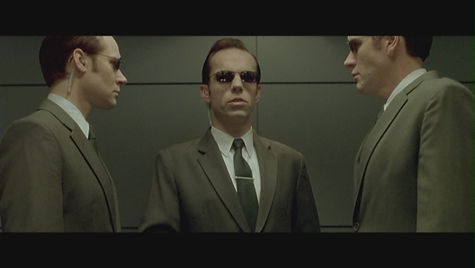About the Author

This website represents the culmination of my time at the University of Texas at Austin receiving my Masters in Media Studies.
I first began to take an interest in machine-human interactions and relationships in Dr. Sharon Strover's "Communication, Technology, and Culture" class, where I was first introduced to the digital influencer Lil Miquela. Miquela was the start of my thinking about the ways that we integrate machines and technology into our daily lives. In following this line of enquiry, I found myself contemplating the way that in taking a recuperative stance toward technology, and in looking at our images of machines and tech through a queer lens, can reveal new modes of being in the world. I found myself transfixed by the ways that these creations are frequently the backdrop that allow humans a way to imagine a different world and a different self. More often than not, these imaginings take on a distinctly counter-hegemonic sensibility.
Halfway through “Communication, Technology, and Culture” (Spring 2020), the COVID-19 pandemic forced us into remote online courses. I’m writing this section on the one-year anniversary of the World Health Organization declaring a worldwide pandemic. Since then, I’ve completed the majority of my Masters remotely.

Constant discipline within the Matrix
The Matrix, as a system and a means of control, plays on the patriarchal/heteronormative need to organize and discipline. What makes the Matrix effective at control is that it doesn’t treat humanity as an inseparable unit. It treats them individually. As Foucault states, it “[exercises] upon [each person] a subtle coercion, of obtaining holds upon [them] at the level of the mechanism itself -
movements, gestures, attitudes, rapidity: an infinitesimal power over the active body” (Foucault 136-137). Each person in the Matrix is closely monitored by the machines to make sure that they are contained and engaging with their simulated life in a manner that is beneficial to the machines’ continued survival and control. Remember, the machines need human brains to be active, so that their body generates the power that keeps them alive. This monitoring and control is undetectable by most humans. They believe their choices and beliefs are their own.
By deciding to take the red pill, Neo escapes the Matrix, effectively turning his back on his “visible past” and future. When Neo emerges from his pod, gasping for breath for the first time in his life, he is metaphorically (re)born into the “Desert of the Real.” The world outside of the Matrix simulation acts as a direct counter to the world many still inhabit. Neo has turned away from the machines’ top-down control of his person, but in doing so has lost everything. Queerness emerges in the Desert of the Real in these moments of (re)birth into a life that operates both within and outside of the (previously) naturalized methods of control. Neo has let go of everything he believed to be true, and in turn, opened himself up to new experiences and new modes of being.
In Morpheus’ interrogation, Agent Smith speaks about how the different iterations of the Matrix, how many tries it took to be able to control humans. He also sermonizes on the hierarchy between species, ending with the assertion that humans are a virus, and if they can’t stay in line and under control, they must be eliminated.
After the Matrix, his life becomes less about the individual, and solely focused on the collective. While first finding himself on the fringes of life inside the Matrix, Neo now finds himself welcomed into a group that recognizes their position to normative structures (represented by the Matrix) and actively fights against them. This fight is taken up physically by putting their bodies in danger, but also performatively, in kinship structures aboard the Nebuchadnezzar and in Zion. In these spaces, the “queer” is “nonnormative logics and organizations of community, sexual identity, embodiment, and activity in space and time” that operate outside of the nuclear family, capital accruement, and consumption (Halberstam 6).
Click here to read more on Foucault's Discipline and Punish.
 Hyperreality and the Matrix |
|---|
 (Re)Envisioning the Panopticon |
 Simulacra, Simulation, and the Matrix |
 Back to the Matrix Entrance Page |